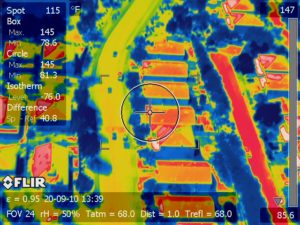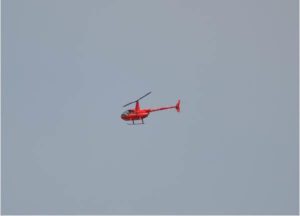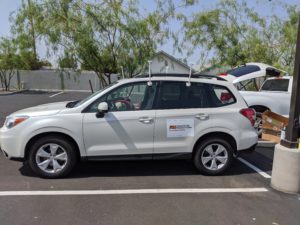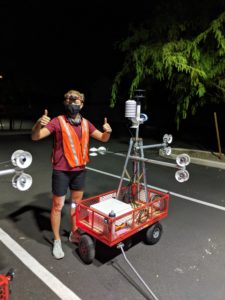We are excited to announce the 3rd annual Urban Climate Research Center Poster Event. This year’s event includes posters from 8 ASU schools and collaborators at 4 other universities. As it will be online, we REQUIRE participants to RSVP in advance so that we can send you the zoom links and password to attend this unique event, which will include parallel poster room sessions so that each individual poster presenter will be able to directly interact with interested event participants.
UCRC Exploring Cool Pavements in Phoenix
This summer the City of Phoenix has been experimenting with a cool-seal product that replaces the traditional very dark seal coat that is applied to streets every 3-5 years with a more solar-reflective coating that holds promise for cooling the city. ASU’s Urban Climate Research Center has been partnering with the city to evaluate the thermal effects in neighborhoods where the technology has been deployed. We have conducted 3 intensive monitoring campaigns this summer using cart-based (MaRTy Cart) mean radiant temperature measurements, car-based air and surface temperature traverse measurements, and helicopter-based thermography. We are also tracking subsurface temperature and pavement thermal storage as well as the evolution of the seal-coat radiative properties. With much of the data now in hand, we turn to the task of analyzing the results. Thanks to the many students and faculty who gave up sleep (measurements starting at 4am) and sweat (peak temps > 110F) to make this happen!
The motley drivers of heat and cold exposure in 21st century US cities
Ashley Broadbent, an Assistant Research Professor in Geographical Sciences and Urban Planning, and faculty affiliate of the Urban Climate Research Center, together with colleagues Scott Krayenhoff and Matei Georgescu, has recently published “The motley drivers of heat and cold exposure in 21st century US cities” in the Proceedings of the National Academy of Sciences (PNAS). The paper presents population-weighted estimates of outdoor heat and cold exposure, considering both global climate change and urban expansion during the 21st century. The results are particularly significant for cities in the US sunbelt, which are projected to see the greatest increase in population over the next several decades. This work represents an important contribution to understanding future heat/cold exposure, particularly when linked with other recent studies exploring indoor vs. outdoor exposure and relative access to shaded outdoor or air-conditioned indoor environments.
The full paper can be found here.





